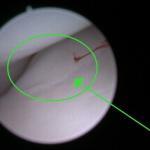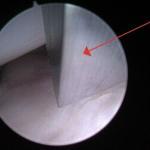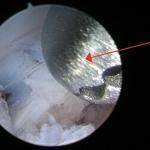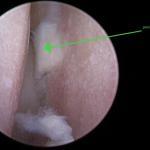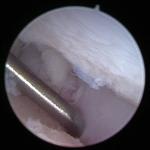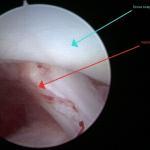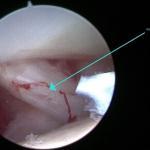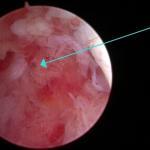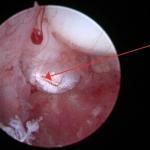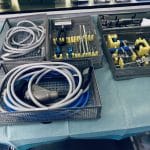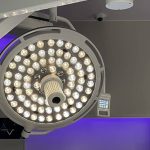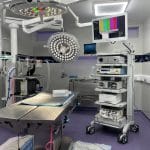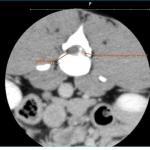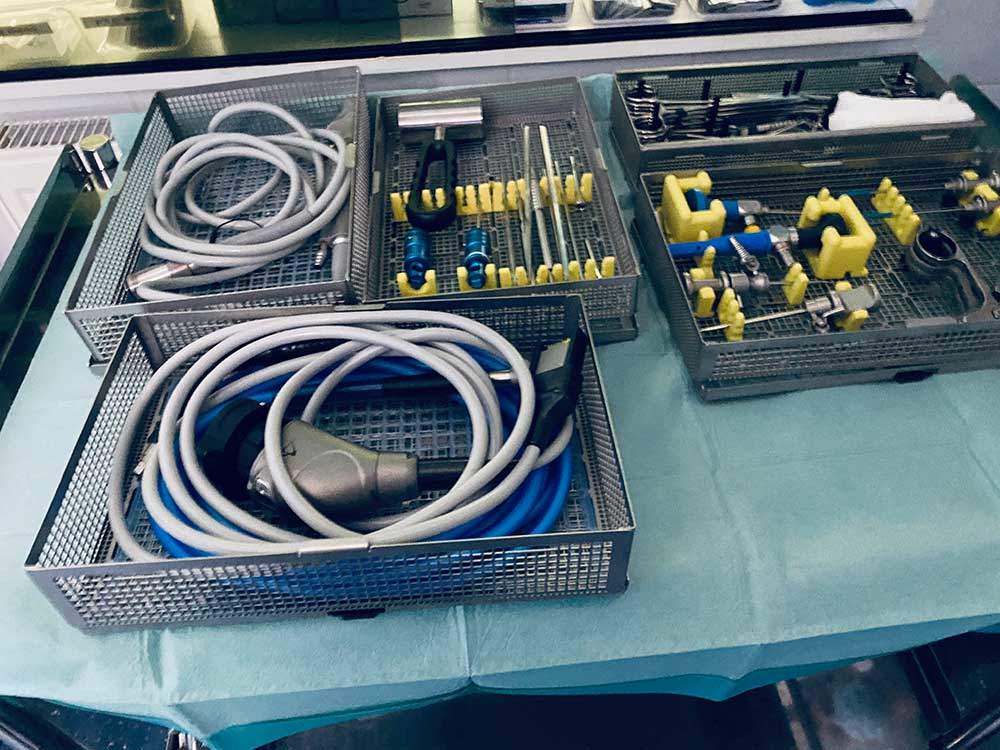
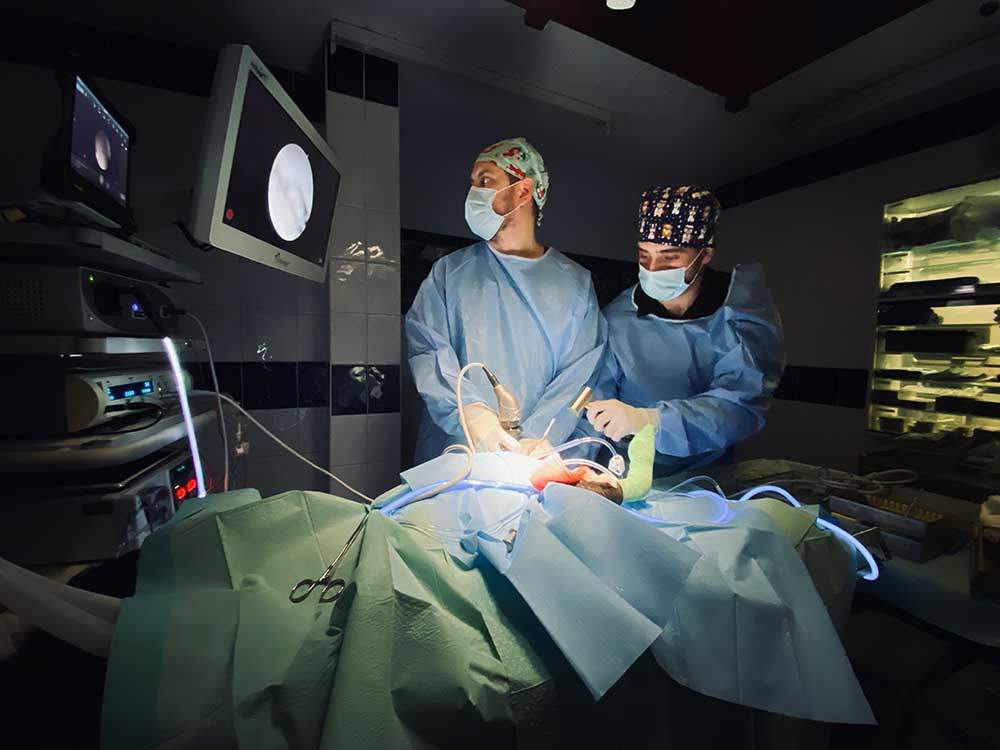
Arthroscopy (or scoping a joint) is a minimally invasive technique to perform surgeries in the joint. Following general anesthesia, a specialized telescope (arthroscope) sizing from 1.9mm to 3.1mm is placed into the joint via a small incision. A camera is attached to the telescope, and the images within the joint are transmitted to a TV monitor. The surgeon will evaluate the joint structures and treat the joint pathologies using various specially designed instruments. Depending on the procedure, an additional 1 to 3 small incisions will be created to accommodate the specially designed arthroscopic instruments. Arthroscopy procedure is both diagnostic and therapeutic. Often the surgeon will first assess the severity and extent of the joint disease, followed by definite surgical treatment of the joint disease.
Many joint disorders can be treated using the arthroscopy technique:
- In elbow dysplasia patients, arthroscopy is used to remove fragmented bone chips and debride diseased bone and soft tissue.
- Loose cartilage fragments can be removed arthroscopy in cases such as OCD of the shoulder, elbow, knee, and ankle.
- In dogs with cranial cruciate ligament rupture, arthroscopy procedure can help with cranial cruciate ligament debridement, meniscus examination, and meniscal debridement If there is a tear present.
- In cases such as biceps tenosynovitis, the biceps tendon can be released arthroscopically and eliminated biceps tendon pain.
- Patients with infection within the joint (septic arthritis) can benefit from joint lavage and debridement under arthroscopy guidance.
The advantages of the arthroscopy surgical technique are:
- Direct visualization and diagnosis of articular cartilage and soft tissue damage.
- The magnifying effect of the arthroscopy telescope provides an accurate diagnosis.
- Compare to arthrotomy, the incisions are smaller and may create less pain and faster recovery.
The disadvantages of the arthroscopy surgical technique are:
- Require specialized equipment and facilities.
- Advanced training for veterinary surgeons is necessary as this technique has a steep learning curve.
- Not all lesions can be identified or treated with arthroscopy technique, and an open arthrotomy may be needed.



